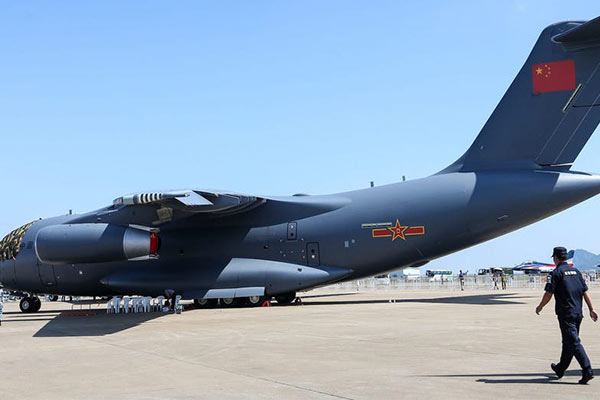China’s Air Force shows off new capability near Taiwan through its latest flight.
China’s Y-20 aerial refueling aircraft was sent with 26 military planes into Taiwan’s air-defense identification zone.

An oil tanker aircraft joined mainland China’s air patrol near Taiwan for the first time on Sunday, according to the island’s defense ministry, a move an analyst said was to show the PLA’s boosted attack ability.
The Y-20 aerial refueling aircraft was sent with 26 military planes — 18 fighter jets, five nuclear-capable H-6 bombers, two KJ-500 airborne early warning, and control aircraft, and a Y-9 transport aircraft — into Taiwan’s air-defense identification zone (ADIZ), prompting Taipei to scramble fighter jets and deploy missile systems for monitoring.
The H-6 bombers and six of the fighter jets flew south of Taiwan into the Bashi Channel separating Taiwan from the Philippines before steering out into the Pacific and returning to the mainland, according to a map provided by the Taiwanese defense ministry.
Beijing has been sending patrols into the island’s ADIZ on almost a daily basis since late September last year. The ADIZ is not the same as Taiwan’s territorial air space but a self-declared space that is monitored for security purposes.
The Y-20 is a Chinese domestically developed large cargo plane. The aerial tanker variant of the Y-20 can refuel J-20 fighter jets and H-6 bombers mid-air using the probe-and-drogue refueling method, which could expand the operational range of the People’s Liberation Army (PLA), Air Force, to more than 8,000 km (4,970 miles) and combat radius to 3,000 km, according to a Global Times report.
It is widely expected that the tanker variant of the Y-20 will work together with — and eventually replace — the PLA’s few imported Il-78 tankers and the domestically developed but less capable HU-6, according to the report.

Military website Defensenews.com reported in February that serial production of the Y-20 oil tanker variant had begun, citing satellite imagery.
Song Zhongping, a Hong Kong-based military commentator, said the Y-20 oil tanker variant could help Beijing prepare for military actions related to Taiwan.
“Oil tankers are important to refuel fighters and bombers during an attack mission, or can serve as the fuel backup for even longer operations into the Western Pacific,” Song said.
“As the Y-20 oil tanker variant is an indigenous aircraft, it means China’s refueling abilities can be fully guaranteed and no longer reliant on other countries.”
However, the four-engine Y-20 is still powered by Russian turbofan engines. The PLA is developing its WS-20 high-bypass turbofan for the Y-20 family, although the engine is not expected to enter production before 2024.

 News1 week ago
News1 week ago
 Celebrities Auto1 week ago
Celebrities Auto1 week ago
 News1 week ago
News1 week ago
 News1 week ago
News1 week ago
 Celebrities Auto5 days ago
Celebrities Auto5 days ago
 Celebrities Auto1 week ago
Celebrities Auto1 week ago
 Concept Cars1 week ago
Concept Cars1 week ago
 Car Facts6 days ago
Car Facts6 days ago













